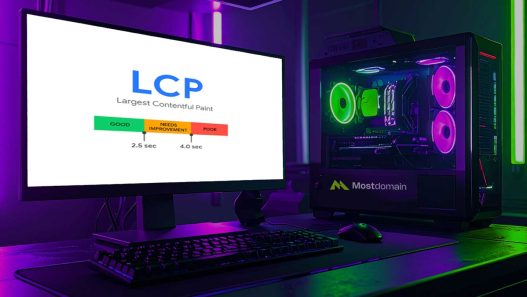Modern frontend frameworks have revolutionized web development, enabling developers to build intuitive, dynamic, and high-performance applications with a structured, efficient workflow. They shift the focus to creativity and user experience by eliminating complex, low-level DOM manipulations.
In this comprehensive exploration, we will explore into what defines modern frontend frameworks, their significance in contemporary web development, and how they transform productivity. We’ll analyze core features of leading frameworks, highlight potential pitfalls, and offer insights on selecting and leveraging these tools for optimized development.
The Evolution of Frontend Development and Rise of Modern Frameworks
The history of frontend development reflects a trajectory of increasing complexity, interactivity, and user expectations. Early web pages were predominantly static, primarily written with HTML and styled with CSS. JavaScript then emerged to introduce interactivity but lacked the structure necessary for larger applications.
Modern frontend frameworks like React, Angular, Vue.js, and Svelte revolutionized web development by introducing component-based architectures, reactive programming, and modular design.
They significantly improved code maintainability, reusability, and testing, creating a foundation for scalable applications. Today, these frameworks are comprehensive ecosystems that integrate with build systems, testing libraries, and deployment pipelines.
Core Features of Modern Frontend Frameworks
Modern frontend frameworks share several key features that distinguish them from traditional JavaScript or server-side rendered applications:
1. Component-Based Architecture
At the heart of most modern frontend frameworks lies the concept of components: self-contained units encapsulating HTML, CSS, and JavaScript logic. This modularity facilitates code reusability and simplifies maintenance, as each component handles a specific piece of UI or functionality.
2. Reactive Data Binding
Reactiveness allows the UI to automatically reflect changes in data models without manual DOM updates. Frameworks like Vue.js and React use reactive programming principles to create seamless user experiences. This reactive binding reduces boilerplate code and accelerates development, especially in complex interfaces.
3. Virtual DOM and Performance Optimization
Frameworks like React employ a Virtual DOM: a lightweight copy of the actual DOM to optimize rendering performance. By batching updates and minimizing DOM manipulations, these frameworks ensure applications remain fast and responsive, even as they grow in complexity.
4. State Management Solutions
✓ Managing application state becomes manageable through built-in or external state management libraries like Redux, Vuex, or NgRx
✓ Proper state management ensures data consistency across components
✓ Simplifies debugging and improves predictability
5. Tooling and Ecosystem Support
Most modern frameworks offer comprehensive tooling: CLI tools, code editors, debugging utilities, and testing libraries that streamline development workflows. Integration with build tools like Webpack, Rollup, or Vite offers optimized bundling, code-splitting, and hot module replacement features.
Popular Framework Comparison
| Framework | Key Strengths | Best For | Learning Curve |
| React | High flexibility, huge ecosystem | Various project types | Moderate |
| Vue.js | Easy to learn, excellent docs | Small to medium projects | Easy |
| Angular | Comprehensive structure, TypeScript | Enterprise applications | Steep |
| Svelte | Optimal performance, no virtual DOM | Modern lightweight apps | Moderate |
Choosing the Right Modern Frontend Framework
The choice of a modern frontend framework depends on factors like project scope, team expertise, and performance needs. React is highly flexible and suitable for a wide range of projects, including large-scale applications.
Vue.js offers an easy learning curve and is ideal for small to medium projects. Angular, with its comprehensive structure and TypeScript support, is best suited for comprehensive, enterprise-level applications.
Ultimately, staying adaptable and understanding core concepts ensures seamless integration of tools, as there is no single best solution.
The Future of Modern Frontend Frameworks
The ecosystem surrounding modern frontend frameworks continues to evolve rapidly. Innovations such as server-side rendering (SSR), static site generation, and advancements in WebAssembly open new horizons for performance and accessibility. Frameworks are becoming more modular, with lighter footprints striving to combine the best features of their predecessors.
Integration with emerging technologies like AI-driven development tools and automated testing will further boost developer productivity. Frameworks are also placing more emphasis on developer experience through better documentation, community support, and simplified APIs, facilitating quicker onboarding and fewer bugs.
Important Implementation Considerations
⚠ Avoid over-engineering: Don’t use complex frameworks for simple projects
✓ Prioritize performance: Choose frameworks based on your application needs
✓ Consider your team: Match with developer skill levels and experience
✓ Evaluate ecosystem: Ensure framework has adequate supporting libraries and tools
Boosting Productivity with Modern Frameworks
Adopting modern frontend frameworks means not just choosing a tool but embracing a paradigm that aligns with contemporary best practices. These frameworks provide abstractions that allow for cleaner separation of concerns and faster iteration cycles, reducing developer fatigue and improving code consistency.
With component-based architectures, reactive data handling, performance optimizations, and rich ecosystems, modern frontend frameworks significantly elevate developer productivity and application quality.
They make complex features feasible within tight timelines, encourage best practices, and accelerate development cycles, which is invaluable in fast-paced project environments.
Ready to Transform Your Web Development Workflow?
Modern frontend frameworks have drastically reshaped web development by introducing structured, efficient, and scalable approaches to building user interfaces.
With their component-based architectures, reactive data handling, performance optimizations, and rich ecosystems, they significantly boost developer productivity and application quality.
As technology advances, these frameworks will continue to evolve, integrating new capabilities and setting higher standards for web experiences.
Embracing these tools effectively can lead to faster development cycles, more maintainable codebases, and ultimately, better web applications that meet and exceed user expectations.
References
- React Documentation, Official React Team, 2024
- Vue.js Guide, Vue.js Core Team, 2024
- Angular Developer Documentation, Google Angular Team, 2024
- State of JavaScript Survey, Devographics, 2024
- MDN Web Docs: Frontend Development Best Practices, Mozilla Foundation, 2024
- Web Performance Optimization Techniques, W3C, 2024
- Component-Based Architecture Patterns, Software Engineering Institute, 2024



















